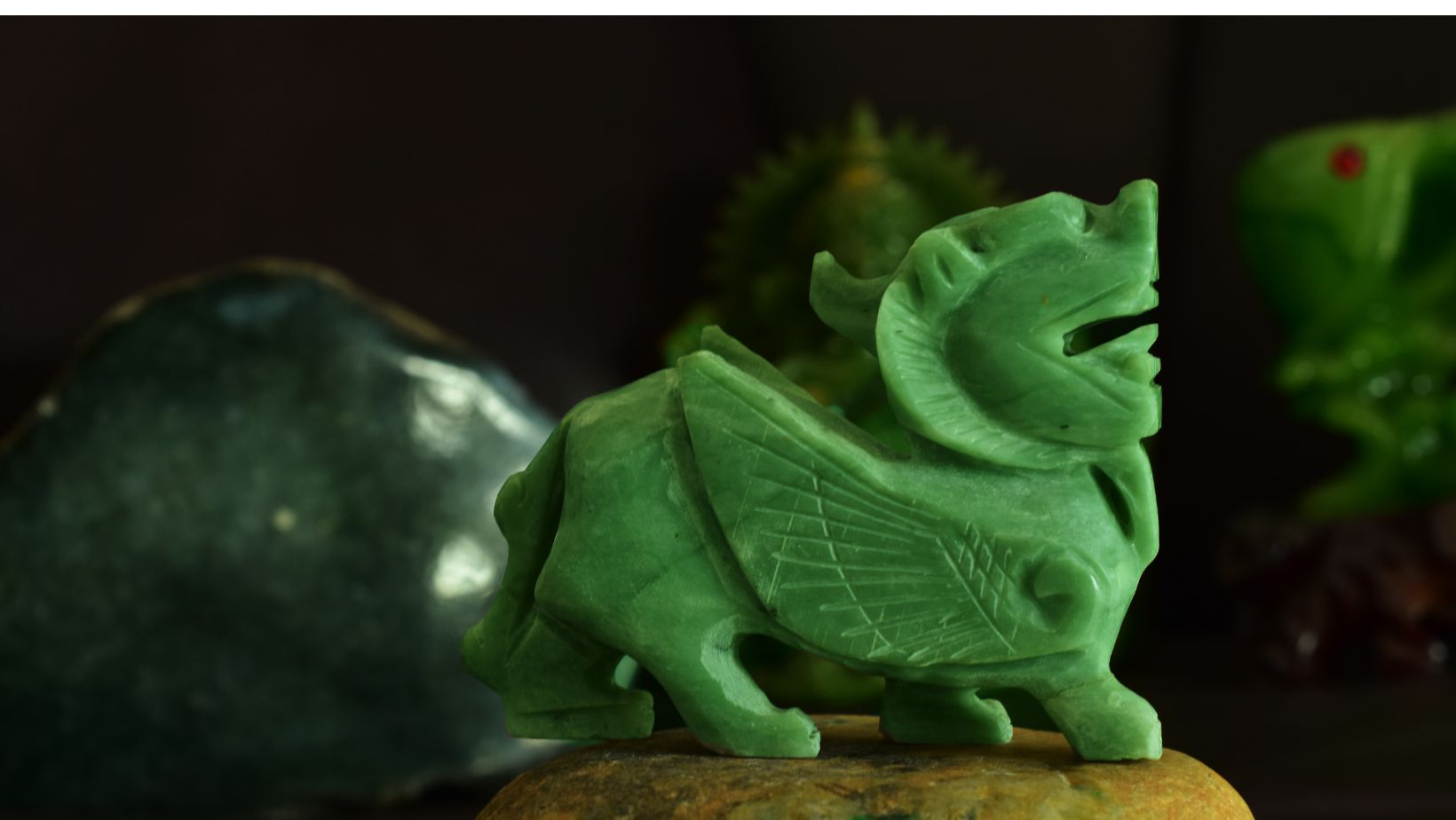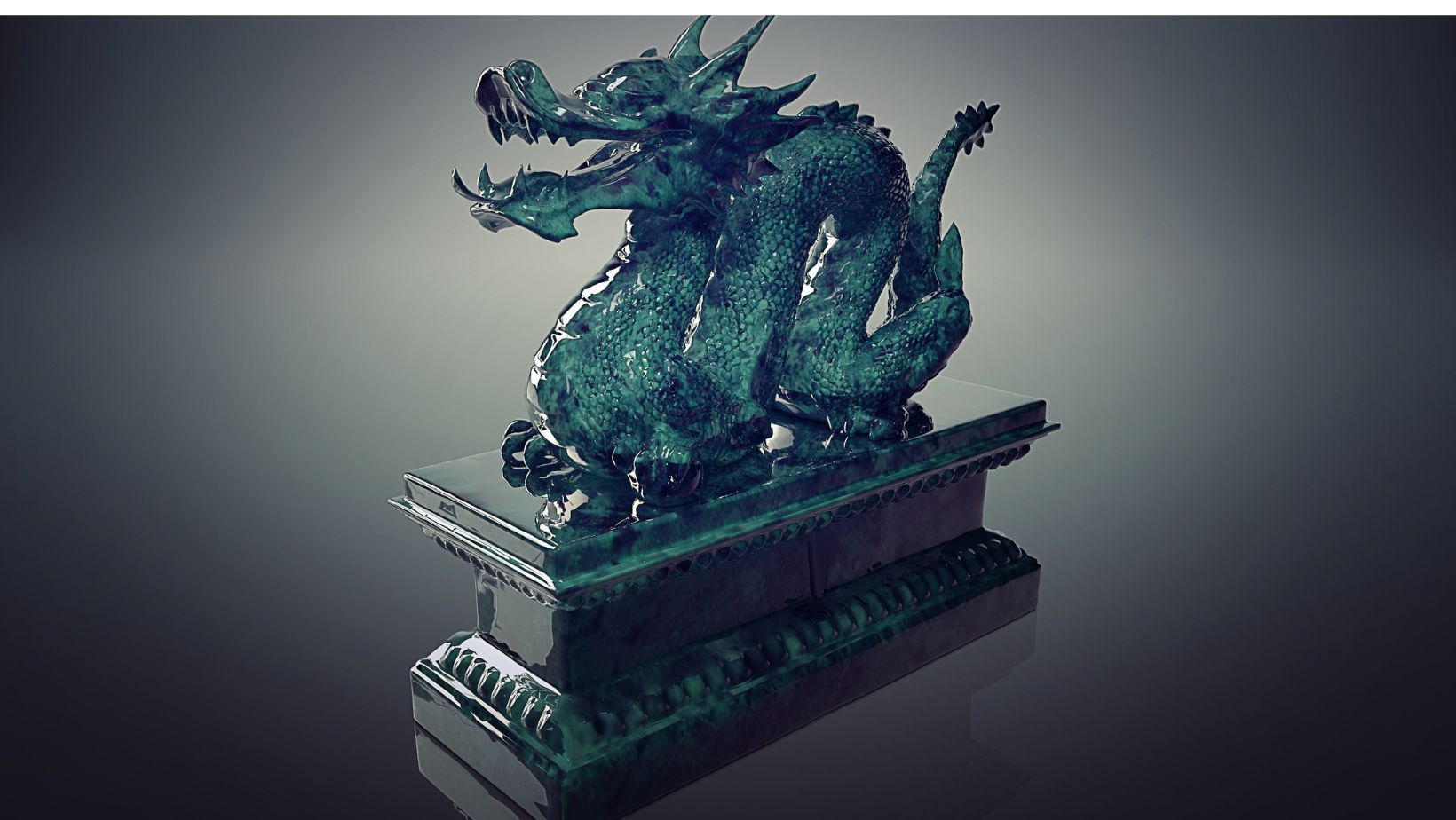Jade sculpture isn’t just a pretty face; it’s a timeless treasure that’s been captivating art lovers for centuries. With its rich history and stunning beauty, jade has carved its way into the hearts of many. Imagine owning a piece of art that not only elevates your decor but also connects you to ancient cultures and traditions. Talk about a conversation starter!
From intricate carvings of mythical creatures to elegant figurines, jade sculptures showcase the skill of artisans who turn a simple stone into a masterpiece. Each piece tells a story, whispering secrets of the past while adding a touch of sophistication to any space. So whether you’re a seasoned collector or just dipping your toes into the world of art, jade sculptures are the perfect blend of elegance and history. Who knew that a rock could be this fabulous?
Jade Sculpture
Jade sculpture embodies cultural significance and artistic mastery. Various cultures, particularly in Asia and Central America, have revered jade for centuries. Its durability and beauty make it a favored material for creating intricate carvings and figures. Crafted pieces often depict animals, deities, and mythical creatures, showcasing the artist’s skills.
Each jade sculpture carries a story, reflecting the beliefs and traditions of its origin. Various jade colors, including green, white, and lavender, enhance the piece’s visual appeal and influence its symbolism. Green jade often signifies prosperity and good fortune, while white jade represents purity and peace.
The process of creating jade sculptures requires specialized techniques. Artists use tools like chisels and rotary grinders to achieve fine details and smooth finishes. Patience and precision are crucial, as the hardness of jade can make it challenging to work with.
Craftsmanship plays a central role in the value of jade sculptures. Collectors and enthusiasts appreciate the time and effort invested in each piece. Artisans often draw inspiration from nature, mythology, and historical narratives, resulting in designs that resonate with viewers.
Investing in jade sculptures offers both aesthetic and financial benefits. The enduring popularity of jade means a well-crafted piece can appreciate over time. This aspect attracts beginners and seasoned collectors alike, as they seek to enhance their collections with these timeless works of art.
Historical Significance
 Jade sculpture possesses profound historical significance, reflecting the artistry and cultural values of ancient civilizations.
Jade sculpture possesses profound historical significance, reflecting the artistry and cultural values of ancient civilizations.
Ancient Origins
Jade sculpture’s roots trace back thousands of years, particularly in regions like China and Mesoamerica. Ancient artisans carved jade into various forms, from ceremonial items to intricate figures. These early works showcased not only exceptional skill but also the deep cultural meanings associated with jade. In Chinese culture, jade represented purity, beauty, and moral integrity. Mesoamerican cultures, such as the Maya and Aztec, valued jade for its associations with life and fertility. This historical context underscores the importance of jade, as it symbolized power and spirituality.
Cultural Importance
Cultural significance permeates jade sculpture, especially in Asian and Central American traditions. In Asia, jade holds a revered position, often linked to nobility and divinity. Statues and amulets frequently depict dragons, deities, and symbols of prosperity, which resonate with deep-rooted beliefs. Similarly, in Mesoamerica, jade items were crafted for religious ceremonies and buried with elite individuals, symbolizing an enduring legacy. Collectors and enthusiasts often seek out these pieces, appreciating not only their beauty but also their connection to distinct cultural narratives. Such values affirm jade’s role in bridging the past with the present, making its artistry timeless.
Techniques and Styles
Jade sculpture encompasses various techniques and styles, showcasing the artistry and skill of the craftsmen. Understanding these methods reveals the intricate nature of this timeless art form.
Carving Tools and Methods
Craftsmen use specialized tools to carve jade, given its hardness. Common tools include diamond drills, chisels, and abrasives, allowing for precision and detail. Techniques like drilling and grinding play a crucial role in shaping figures. Additionally, polishing brings out jade’s natural luster, enhancing its visual appeal. Patience proves essential throughout this meticulous process, as artisans must invest significant time to achieve their desired outcomes.
Notable Styles in Jade Sculpture
Several styles characterize jade sculpture, reflecting diverse cultural inspirations. Traditional Chinese styles often depict dragons, phoenixes, and deities, symbolizing power and prosperity. Mesoamerican influences can be seen in carvings of jaguar motifs and fertility figures, showcasing the region’s rich mythology. Furthermore, modern artists experiment with abstract forms, blending traditional techniques with contemporary aesthetics. Each style narrates a unique cultural story, enhancing the significance of each jade piece.
Famous Jade Sculptures
Jade sculptures carry immense cultural and historical significance. They represent artistry that resonates across various cultures and eras.
Iconic Examples
The “Heavenly Maiden” is one of the most famous jade sculptures, originating from the Han dynasty in China. This exquisite piece depicts a celestial figure, reflecting the artistry of ancient Chinese craftsmen. Another notable example is the “Jadeite Cabbage,” a celebrated item in Taiwan, symbolizing purity and prosperity. This intricate sculpture showcases the delicate veins and layers of a cabbage, demonstrating the level of detail artisans can achieve. The “Dragon and Phoenix” motif remains prominent in Chinese jade representations, symbolizing harmony and balance. Recognized for its vibrant colors, particularly in the lighter shades, jade sculpture continues to captivate collectors and enthusiasts worldwide.
Contributions of Renowned Artists
Master carver Guo’an made significant contributions to jade sculpture with his lifelike representations of dragons and other mythical creatures. Skilled artisans during the Qing dynasty, such as Zhao Chang, created pieces that showcased remarkable detail and craftsmanship. Contemporary artist Wu Jianjun blends traditional methods with modern influences, elevating jade sculpture into current art discussions. His pieces often depict abstract concepts, pushing the boundaries of traditional jade art. Celebrated artists from the Mesoamerican region, like those who crafted jade death masks, highlight the cultural reverence for jade within their civilization. Across different eras, these artists have shaped the narrative of jade sculpture, making their work timeless and culturally rich.
Appreciation and Collecting
Jade sculptures captivate collectors due to their historical significance and aesthetic appeal. Understanding their value and collecting tips enhances the experience.
How to Value Jade Sculpture
Valuing jade sculpture involves several factors. First, consider the quality of the jade itself; the best jade possesses a high translucence and vibrant color. Next, explore the craftsmanship; well-executed carvings with intricate details command higher prices. Rarity impacts value, too; pieces with unique designs or origins tend to be more sought after. Documentation also matters; provenance or history of ownership can increase a sculpture’s desirability. Lastly, current market trends provide context; staying updated on auction results and collector interest helps in assessing value accurately.
Tips for Collectors
Collectors should approach jade sculpture purchases thoughtfully. Always research reputable dealers to ensure authenticity. Joining collector groups or attending exhibitions can provide valuable insights. Inspect each piece closely; assessing for chips or repairs can help gauge condition. Understanding the cultural significance of various styles adds depth to a collection. Acquiring works from noted artisans enhances both aesthetic and investment value. Lastly, maintaining proper care, including temperature control and cleaning, preserves the sculpture’s beauty over time.

